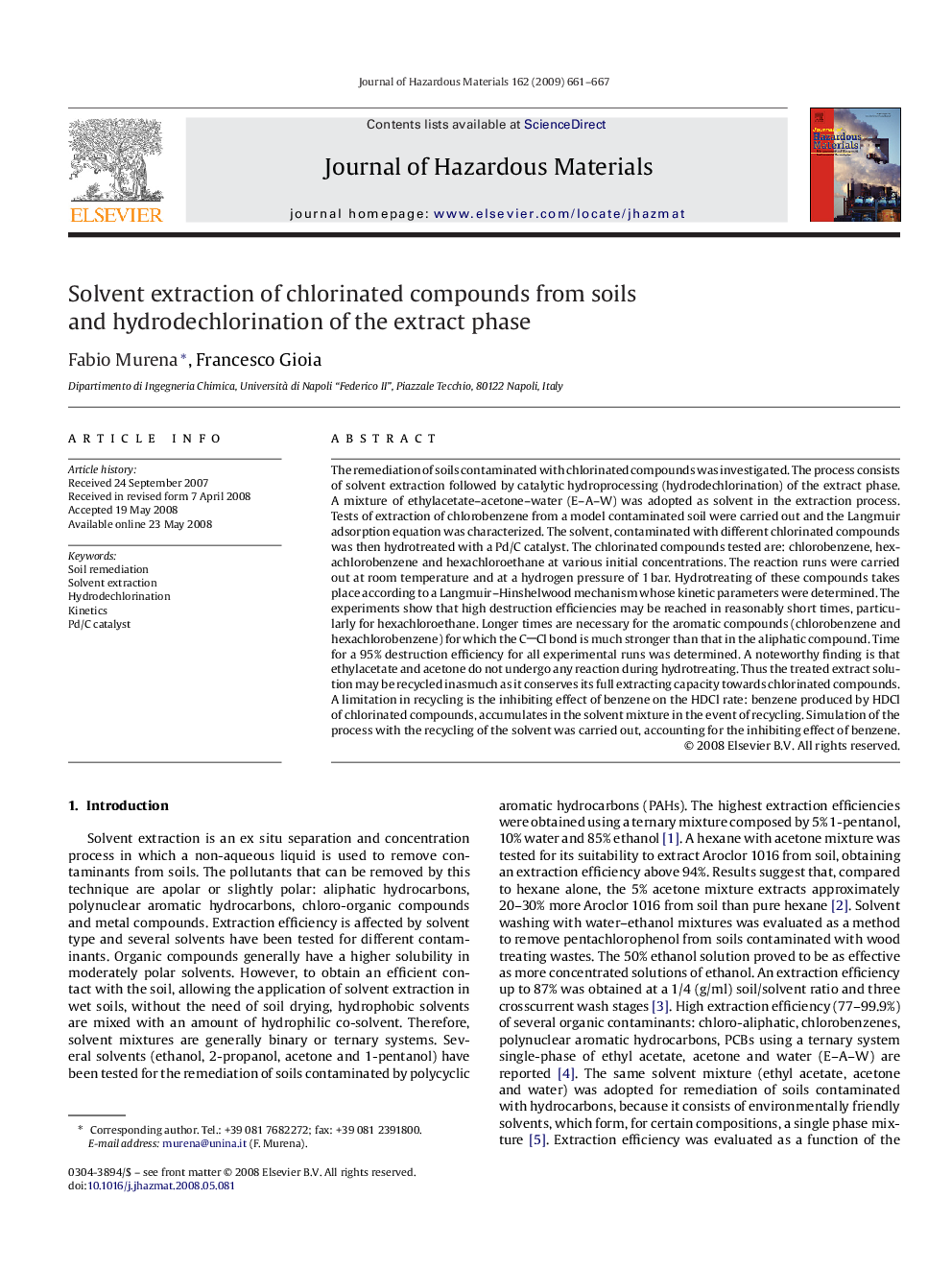| Article ID | Journal | Published Year | Pages | File Type |
|---|---|---|---|---|
| 582345 | Journal of Hazardous Materials | 2009 | 7 Pages |
Abstract
The remediation of soils contaminated with chlorinated compounds was investigated. The process consists of solvent extraction followed by catalytic hydroprocessing (hydrodechlorination) of the extract phase. A mixture of ethylacetate-acetone-water (E-A-W) was adopted as solvent in the extraction process. Tests of extraction of chlorobenzene from a model contaminated soil were carried out and the Langmuir adsorption equation was characterized. The solvent, contaminated with different chlorinated compounds was then hydrotreated with a Pd/C catalyst. The chlorinated compounds tested are: chlorobenzene, hexachlorobenzene and hexachloroethane at various initial concentrations. The reaction runs were carried out at room temperature and at a hydrogen pressure of 1Â bar. Hydrotreating of these compounds takes place according to a Langmuir-Hinshelwood mechanism whose kinetic parameters were determined. The experiments show that high destruction efficiencies may be reached in reasonably short times, particularly for hexachloroethane. Longer times are necessary for the aromatic compounds (chlorobenzene and hexachlorobenzene) for which the CCl bond is much stronger than that in the aliphatic compound. Time for a 95% destruction efficiency for all experimental runs was determined. A noteworthy finding is that ethylacetate and acetone do not undergo any reaction during hydrotreating. Thus the treated extract solution may be recycled inasmuch as it conserves its full extracting capacity towards chlorinated compounds. A limitation in recycling is the inhibiting effect of benzene on the HDCl rate: benzene produced by HDCl of chlorinated compounds, accumulates in the solvent mixture in the event of recycling. Simulation of the process with the recycling of the solvent was carried out, accounting for the inhibiting effect of benzene.
Related Topics
Physical Sciences and Engineering
Chemical Engineering
Chemical Health and Safety
Authors
Fabio Murena, Francesco Gioia,
